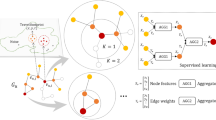Abstract
Advances in sensor, wireless communication, and information infrastructure such as GPS have enabled us to collect massive amounts of human mobility data, which are fine-grained and have global road coverage. These human mobility data, if properly encoded with semantic information (i.e. combined with Point of Interests (POIs)), is appealing for changing the paradigm for gas station site selection. To this end, in this paper, we investigate how to exploit newly-generated human mobility data for enhancing gas station selection. Specifically, we develop a ranking system for evaluating the business performances of gas stations based on waiting time of refueling events by mining human mobility data. Along this line, we first design a method for detecting taxi refueling events by jointly tracking dwell times, GPS trace angles, location sequences, and refueling cycles of the vehicles. Also, we extract the fine-grained discriminative features strategically from POI data, human mobility data and road network data within the neighborhood of gas stations, and perform feature selection by simultaneously maximizing relevance and minimizing redundancy based on mutual information. In addition, we learn a ranking model for predicting gas station crowdedness by exploiting learning to rank techniques. The extensive experimental evaluation on real-world data also show the advantages of the proposed method over existing approaches for gas site selection.
Access this chapter
Tax calculation will be finalised at checkout
Purchases are for personal use only
Similar content being viewed by others
References
Bowerman, B., Braverman, J., Taylor, J., Todosow, H., Von Wimmersperg, U.: The vision of a smart city. In: 2nd International Life Extension Technology Workshop, Paris (2000)
Chan, T.Y., Padmanabhan, V., Seetharaman, P.: An econometric model of location and pricing in the gasoline market. J. Mark. Res. 44(4), 622–635 (2007)
Chen, C.-F.: Applying the analytical hierarchy process (AHP) approach to convention site selection. J. Travel Res. 45(2), 167–174 (2006)
Cheng, E.W., Li, H., Yu, L.: A GIS approach to shopping mall location selection. Build. Environ. 42(2), 884–892 (2007)
Efthymiou, D., Antoniou, C., Tyrinopoulos, Y.: Spatially aware model for optimal site selection. Transp. Res. Rec. J. Transp. Res. Board 2276(1), 146–155 (2012)
Gorsevski, P.V., Donevska, K.R., Mitrovski, C.D., Frizado, J.P.: Integrating multi-criteria evaluation techniques with geographic information systems for landfill site selection: a case study using ordered weighted average. Waste Manage. 32(2), 287–296 (2012)
Iyer, G., Seetharaman, P.: Too close to be similar: product and price competition in retail gasoline markets. QME 6(3), 205–234 (2008)
Krumm, J., Horvitz, E.: Predestination: inferring destinations from partial trajectories. In: Dourish, P., Friday, A. (eds.) UbiComp 2006. LNCS, vol. 4206, pp. 243–260. Springer, Heidelberg (2006)
Kuo, R.J., Chi, S.-C., Kao, S.-S.: A decision support system for selecting convenience store location through integration of fuzzy AHP and artificial neural network. Comput. Ind. 47(2), 199–214 (2002)
Lavandoski, J., Albino Silva, J., Vargas-Sánchez, A.: Institutional theory in tourism studies: evidence and future directions. Technical report, CIEO-Research Centre for Spatial and Organizational Dynamics, University of Algarve (2014)
Ma, Y.-F., Gao, R.-X.: A gas station distribution model. Oper. Res. Manage. Sci. 5, 013 (2005)
Önüt, S., Efendigil, T., Kara, S.S.: A combined fuzzy MCDM approach for selecting shopping center site: an example from Istanbul, Turkey. Expert Syst. Appl. 37(3), 1973–1980 (2010)
Semih, T., Seyhan, S.: A multi-criteria factor evaluation model for gas station site selection. J. Glob. Manage. 2(1), 12–21 (2011)
Shang, J., Zheng, Y., Tong, W., Chang, E., Yu, Y.: Inferring gas consumption and pollution emission of vehicles throughout a city. In: Proceedings of the 20th ACM SIGKDD International Conference on Knowledge Discovery and Data Mining, pp. 1027–1036. ACM (2014)
Taibi, H., Haibo, H., Xiulan, L., Liangjun, L.: Application analysis and marketing proposals of the lng vehicles and gas filling stations in China. Nat. Gas Ind. 9, 026 (2010)
Zhang, F., Wilkie, D., Zheng, Y., Xie, X.: Sensing the pulse of urban refueling behavior. In: Proceedings of the ACM International Joint Conference on Pervasive and Ubiquitous Computing, pp. 13–22. ACM (2013)
Zheng, Y., Li, Q., Chen, Y., Xie, X., Ma, W.-Y.: Understanding mobility based on gps data. In: Proceedings of the 10th International Conference on Ubiquitous Computing, pp. 312–321. ACM (2008)
Acknowledgement
This work is supported by the Foundation of the State Key Laboratory of Software Development Environment (Grant No. SKLSDE-2015ZX-04).
Author information
Authors and Affiliations
Corresponding author
Editor information
Editors and Affiliations
Rights and permissions
Copyright information
© 2016 Springer International Publishing Switzerland
About this paper
Cite this paper
Niu, H., Liu, J., Fu, Y., Liu, Y., Lang, B. (2016). Exploiting Human Mobility Patterns for Gas Station Site Selection. In: Navathe, S., Wu, W., Shekhar, S., Du, X., Wang, X., Xiong, H. (eds) Database Systems for Advanced Applications. DASFAA 2016. Lecture Notes in Computer Science(), vol 9642. Springer, Cham. https://doi.org/10.1007/978-3-319-32025-0_16
Download citation
DOI: https://doi.org/10.1007/978-3-319-32025-0_16
Published:
Publisher Name: Springer, Cham
Print ISBN: 978-3-319-32024-3
Online ISBN: 978-3-319-32025-0
eBook Packages: Computer ScienceComputer Science (R0)




